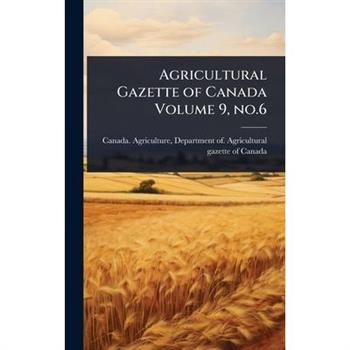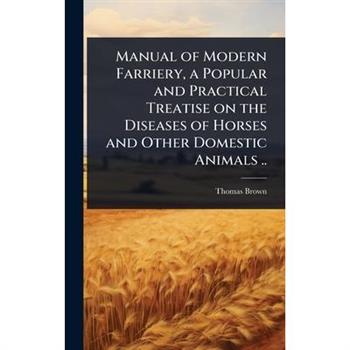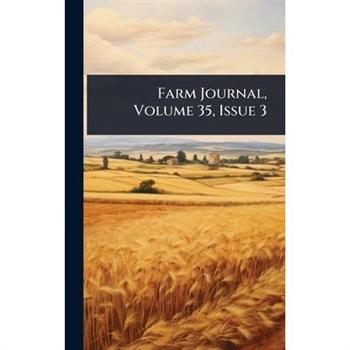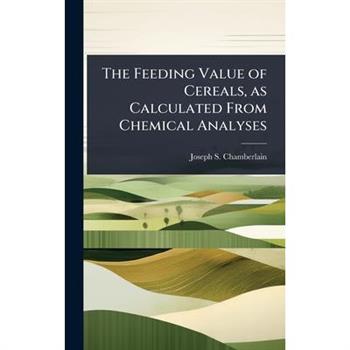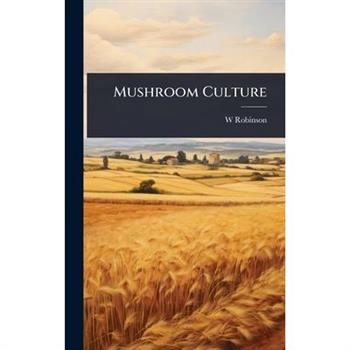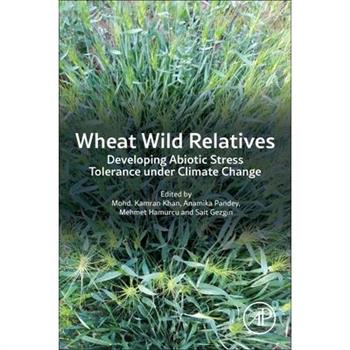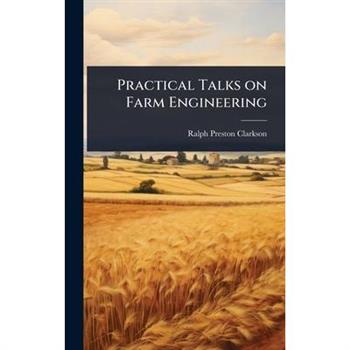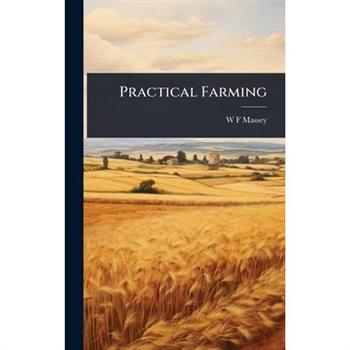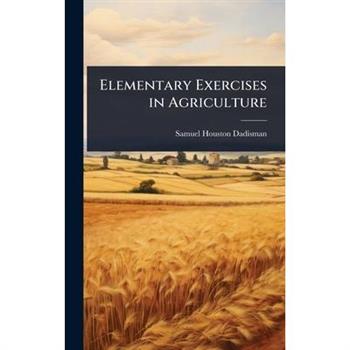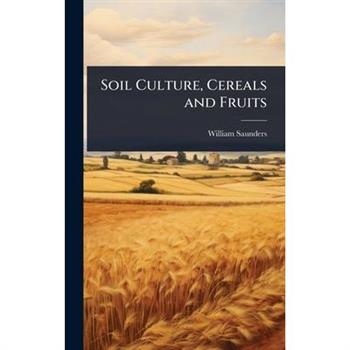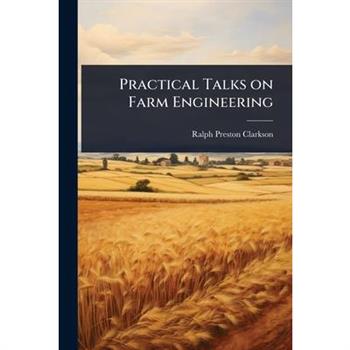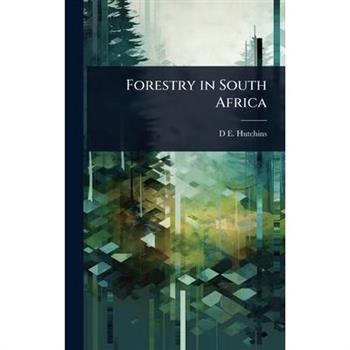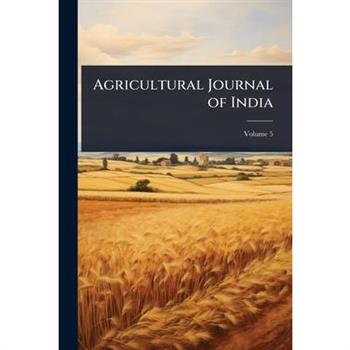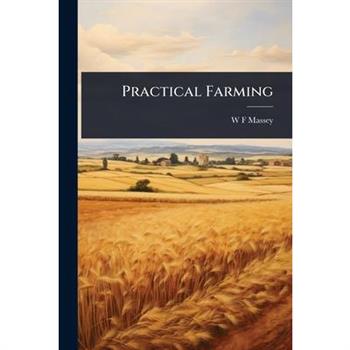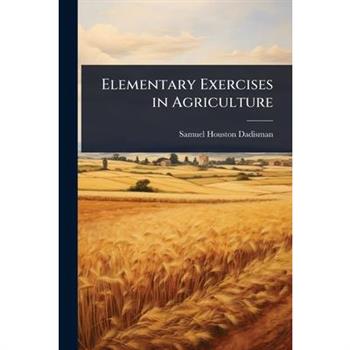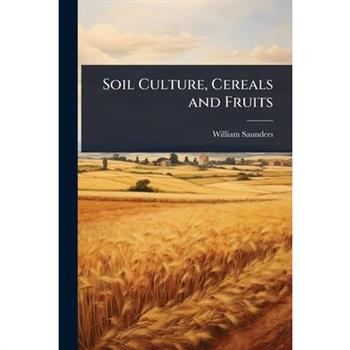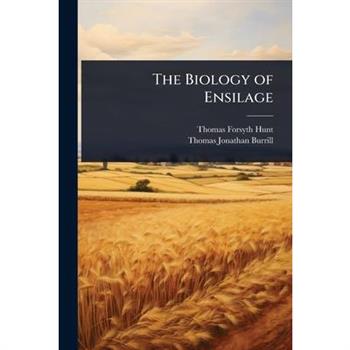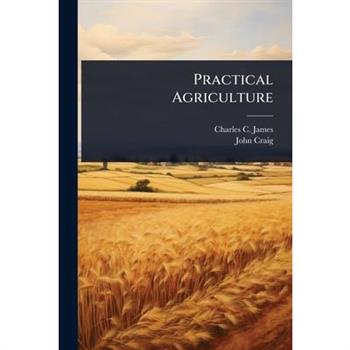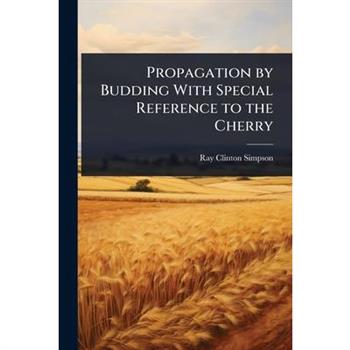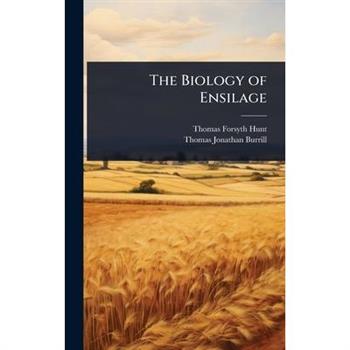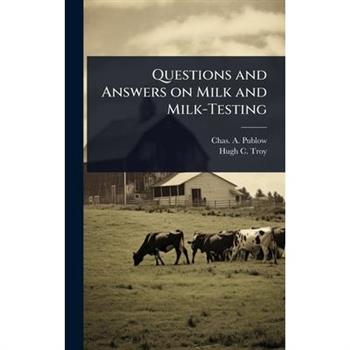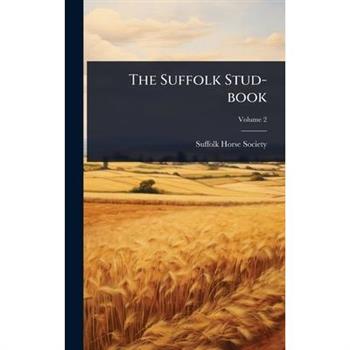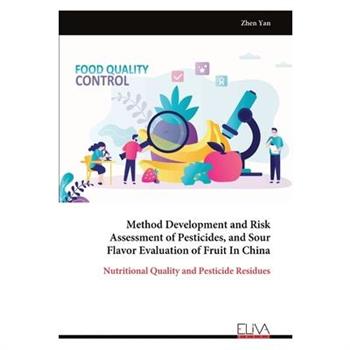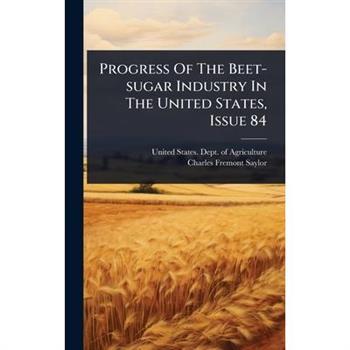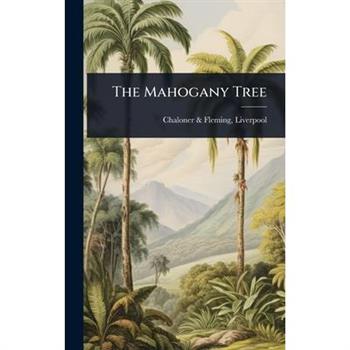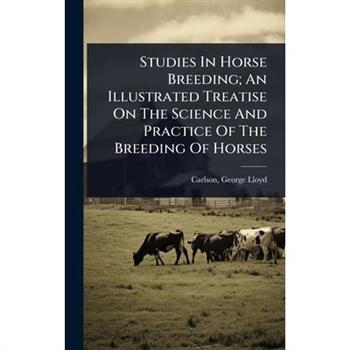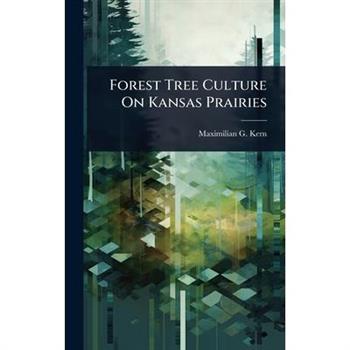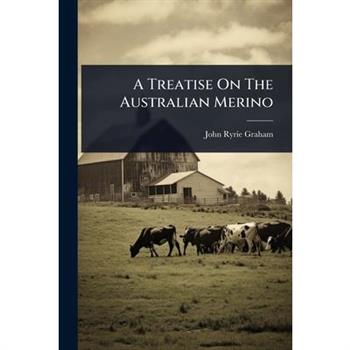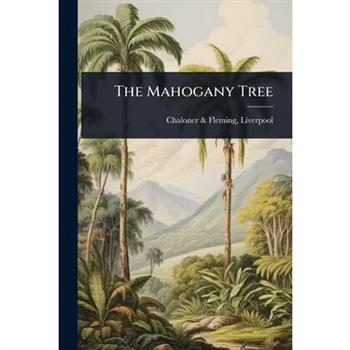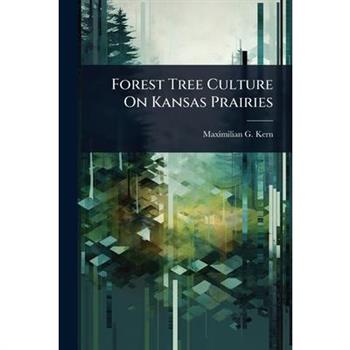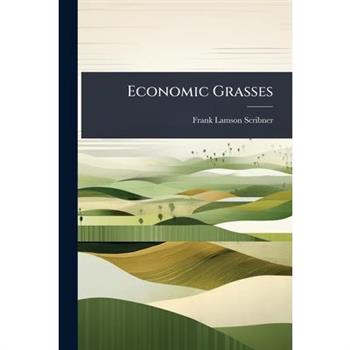Citrus Fruits in California
"Citrus Fruits in California" offers a detailed exploration of citrus cultivation, providing a comprehensive guide to successful fruit production. From planting to harvest, this monograph, originally published by Roeding & Wood Nursery Company, presents the essential principles and practices necessary for cultivating healthy and productive citrus groves in California. Readers will gain valuable insights into tree management, soil preparation, irrigation techniques, and pest control methods. This resource is invaluable for both novice and experienced growers seeking to optimize their citrus yields and produce high-quality fruit. Discover time-tested methods and foundational knowledge in this enduring guide.This work has been selected by scholars as being culturally important, and is part of the knowledge base of civilization as we know it. This work was reproduced from the original artifact, and remains as true to the original work as possible. Therefore, you will see the original copyright references, library stamps (as most of these works have been housed in our most important libraries around the world), and other notations in the work.This work is in the public domain in the United States of America, and possibly other nations. Within the United States, you may freely copy and distribute this work, as no entity (individual or corporate) has a copyright on the body of the work.As a reproduction of a historical artifact, this work may contain missing or blurred pages, poor pictures, errant marks, etc. Scholars believe, and we concur, that this work is important enough to be preserved, reproduced, and made generally available to the public. We appreciate your support of the preservation process, and thank you for being an important part of keeping this knowledge alive and relevant.
Agricultural Gazette of Canada Volume 9, no.6
Explore the world of Canadian agriculture with the "Agricultural Gazette of Canada Volume 9, no.6." This volume offers insights into the agricultural practices, research, and policies prevalent in Canada. A valuable resource for agricultural professionals, researchers, and anyone interested in the historical context of farming and environmental conservation in Canada, this gazette provides a snapshot of agricultural life and innovation at the time of its publication.Published by the Department of Agriculture, this volume reflects the government's commitment to supporting and advancing the agricultural sector. Delve into its pages to discover detailed articles, reports, and data that contribute to a deeper understanding of Canadian agriculture.This work has been selected by scholars as being culturally important, and is part of the knowledge base of civilization as we know it. This work was reproduced from the original artifact, and remains as true to the original work as possible. Therefore, you will see the original copyright references, library stamps (as most of these works have been housed in our most important libraries around the world), and other notations in the work.This work is in the public domain in the United States of America, and possibly other nations. Within the United States, you may freely copy and distribute this work, as no entity (individual or corporate) has a copyright on the body of the work.As a reproduction of a historical artifact, this work may contain missing or blurred pages, poor pictures, errant marks, etc. Scholars believe, and we concur, that this work is important enough to be preserved, reproduced, and made generally available to the public. We appreciate your support of the preservation process, and thank you for being an important part of keeping this knowledge alive and relevant.
Manual of Modern Farriery, a Popular and Practical Treatise on the Diseases of Horses and Other Domestic Animals ..
"Manual of Modern Farriery" by Thomas Brown is a comprehensive guide to the diseases of horses and other domestic animals. This practical treatise covers a wide range of ailments, offering valuable insights for those involved in animal care. It provides a detailed overview of farriery techniques, making it an essential resource for both professionals and enthusiasts. This manual, written in accessible language, is designed to be a popular and practical resource. It provides essential knowledge for anyone seeking to understand and treat common diseases in domestic animals. A valuable addition to any veterinary library, offering enduring advice and practical solutions.This work has been selected by scholars as being culturally important, and is part of the knowledge base of civilization as we know it. This work was reproduced from the original artifact, and remains as true to the original work as possible. Therefore, you will see the original copyright references, library stamps (as most of these works have been housed in our most important libraries around the world), and other notations in the work.This work is in the public domain in the United States of America, and possibly other nations. Within the United States, you may freely copy and distribute this work, as no entity (individual or corporate) has a copyright on the body of the work.As a reproduction of a historical artifact, this work may contain missing or blurred pages, poor pictures, errant marks, etc. Scholars believe, and we concur, that this work is important enough to be preserved, reproduced, and made generally available to the public. We appreciate your support of the preservation process, and thank you for being an important part of keeping this knowledge alive and relevant.
Geoponicorum Sive De Re Rustica Libri Xx
This is Volume 4 of "Geoponicorum Sive De Re Rustica Libri Xx," specifically covering Books XIII-XX. A foundational text on agriculture, the "Geoponika" compiles a vast array of agricultural knowledge from the ancient world, offering invaluable insights into farming practices, crop cultivation, and animal husbandry of the time. Attributed to Cassianus Bassus, this volume, edited by Johann Nicolaus Niclas, continues to explore various aspects of rural life and agricultural techniques, preserving the wisdom of earlier Greek, Roman, and Byzantine writers. "Geoponicorum Sive De Re Rustica Libri Xx" remains a vital resource for historians, agricultural scholars, and anyone interested in the historical roots of farming and land management. Its enduring value lies in its detailed record of ancient agricultural methods and its contribution to the understanding of humanity's relationship with the land.This work has been selected by scholars as being culturally important, and is part of the knowledge base of civilization as we know it. This work was reproduced from the original artifact, and remains as true to the original work as possible. Therefore, you will see the original copyright references, library stamps (as most of these works have been housed in our most important libraries around the world), and other notations in the work.This work is in the public domain in the United States of America, and possibly other nations. Within the United States, you may freely copy and distribute this work, as no entity (individual or corporate) has a copyright on the body of the work.As a reproduction of a historical artifact, this work may contain missing or blurred pages, poor pictures, errant marks, etc. Scholars believe, and we concur, that this work is important enough to be preserved, reproduced, and made generally available to the public. We appreciate your support of the preservation process, and thank you for being an important part of keeping this knowledge alive and relevant.
Manual of Modern Farriery, a Popular and Practical Treatise on the Diseases of Horses and Other Domestic Animals ..
"Manual of Modern Farriery" by Thomas Brown is a comprehensive guide to the diseases of horses and other domestic animals. This practical treatise covers a wide range of ailments, offering valuable insights for those involved in animal care. It provides a detailed overview of farriery techniques, making it an essential resource for both professionals and enthusiasts. This manual, written in accessible language, is designed to be a popular and practical resource. It provides essential knowledge for anyone seeking to understand and treat common diseases in domestic animals. A valuable addition to any veterinary library, offering enduring advice and practical solutions.This work has been selected by scholars as being culturally important, and is part of the knowledge base of civilization as we know it. This work was reproduced from the original artifact, and remains as true to the original work as possible. Therefore, you will see the original copyright references, library stamps (as most of these works have been housed in our most important libraries around the world), and other notations in the work.This work is in the public domain in the United States of America, and possibly other nations. Within the United States, you may freely copy and distribute this work, as no entity (individual or corporate) has a copyright on the body of the work.As a reproduction of a historical artifact, this work may contain missing or blurred pages, poor pictures, errant marks, etc. Scholars believe, and we concur, that this work is important enough to be preserved, reproduced, and made generally available to the public. We appreciate your support of the preservation process, and thank you for being an important part of keeping this knowledge alive and relevant.
Farm Journal, Volume 35, Issue 3
This issue of "Farm Journal" offers a snapshot into the world of early 20th-century agriculture. It provides a valuable glimpse into the practices, concerns, and innovations shaping rural life during this period. Readers interested in the history of farming, environmental stewardship, and the evolution of agricultural techniques will find this volume a worthwhile resource. Explore articles and insights reflecting the daily challenges and triumphs of farmers navigating a rapidly changing world.This work has been selected by scholars as being culturally important, and is part of the knowledge base of civilization as we know it. This work was reproduced from the original artifact, and remains as true to the original work as possible. Therefore, you will see the original copyright references, library stamps (as most of these works have been housed in our most important libraries around the world), and other notations in the work.This work is in the public domain in the United States of America, and possibly other nations. Within the United States, you may freely copy and distribute this work, as no entity (individual or corporate) has a copyright on the body of the work.As a reproduction of a historical artifact, this work may contain missing or blurred pages, poor pictures, errant marks, etc. Scholars believe, and we concur, that this work is important enough to be preserved, reproduced, and made generally available to the public. We appreciate your support of the preservation process, and thank you for being an important part of keeping this knowledge alive and relevant.
The Feeding Value of Cereals, as Calculated From Chemical Analyses
"The Feeding Value of Cereals, as Calculated From Chemical Analyses" explores the nutritional content of various cereals and their suitability as animal feed. Based on meticulous chemical analyses, this study provides a detailed examination of the components that contribute to the feeding value of different grains. This work is an invaluable resource for agricultural scientists, farmers, and anyone involved in animal husbandry, offering insights into optimizing feed compositions for improved animal health and productivity.Authored by Joseph S. Chamberlain, the book presents a systematic approach to understanding the relationship between the chemical makeup of cereals and their nutritional benefits. It remains a relevant contribution to the field, providing foundational knowledge for modern agricultural practices and research.This work has been selected by scholars as being culturally important, and is part of the knowledge base of civilization as we know it. This work was reproduced from the original artifact, and remains as true to the original work as possible. Therefore, you will see the original copyright references, library stamps (as most of these works have been housed in our most important libraries around the world), and other notations in the work.This work is in the public domain in the United States of America, and possibly other nations. Within the United States, you may freely copy and distribute this work, as no entity (individual or corporate) has a copyright on the body of the work.As a reproduction of a historical artifact, this work may contain missing or blurred pages, poor pictures, errant marks, etc. Scholars believe, and we concur, that this work is important enough to be preserved, reproduced, and made generally available to the public. We appreciate your support of the preservation process, and thank you for being an important part of keeping this knowledge alive and relevant.
Mushroom Culture
璽€œMushroom Culture: Its Extension and Improvement璽€ offers a detailed guide to cultivating mushrooms, aimed at both novice and experienced growers. This book explores various techniques for mushroom farming, focusing on practical methods to enhance yields and improve the quality of the crop. Written by W 1838-1935 Robinson, it provides insights into the life cycle of mushrooms, optimal growing conditions, and strategies for preventing diseases and pests.This resource is invaluable for anyone interested in sustainable agriculture or seeking to expand their knowledge of mycology. Discover the secrets to successful mushroom cultivation and unlock the potential of this fascinating field.This work has been selected by scholars as being culturally important, and is part of the knowledge base of civilization as we know it. This work was reproduced from the original artifact, and remains as true to the original work as possible. Therefore, you will see the original copyright references, library stamps (as most of these works have been housed in our most important libraries around the world), and other notations in the work.This work is in the public domain in the United States of America, and possibly other nations. Within the United States, you may freely copy and distribute this work, as no entity (individual or corporate) has a copyright on the body of the work.As a reproduction of a historical artifact, this work may contain missing or blurred pages, poor pictures, errant marks, etc. Scholars believe, and we concur, that this work is important enough to be preserved, reproduced, and made generally available to the public. We appreciate your support of the preservation process, and thank you for being an important part of keeping this knowledge alive and relevant.
Climate Policies - Modern Risk-Based Assessment of Investments in Mitigation, Adaptation, and Recovery from Residual Harm
This collection of chapters is organized in sections that reflect humanity's three broad categories of climate policy options: abate (mitigate to reduce the likelihood of climate impacts), adapt (ameliorate some of the consequences of those impacts), and suffer (the residual costs that cannot be avoided). All apply a risk-based perspective to discussions and assessments of what we do and do not know and, thus, what we can or perhaps cannot really do. Each chapter includes, in their concluding remarks at least, some attempt to identify critical gaps in our current understanding of the specific circumstances of the coupling of the climate and human systems on earth and, by continuation, elaborate on constraints on our confidence in relative efficacies that we project in our policy deliberations as we confront particular illustrative risks. Specifically, efficacy judgements take account of at least one of the IPCC metrics for judging response efficacy: net climate change damages, co-benefits and costs of policies, measures of sustainability (of systems and policies), equity calibrated in various metrics of human welfare security, and the degree to which people, communities, sub-national governance bodies, nations, and international institutions are averse to risk.
Wheat Wild Relatives
Wheat Wild Relatives: Developing Abiotic Stress Tolerance under Climate Change presents a state-of-the-art outline of the problem, including issues, opportunities, and modern developments in the utilization of Wild Wheat Relatives (WWR) and related neglected species for wheat crop improvement, specifically focusing on environmental constraints. The book comprehensively discusses different wheat wild relatives, including major genus Triticum and Aegilops and their utilization in mitigating different environmental constraints using agronomic, physiological, and molecular approaches. Chapters provide insights into the advancement in the deployment of wheat genetic resources, including wild relatives and neglected species for crop improvement towards environmental issues. Wheat is a major staple food crop that has largely been focused for fulfilling the food requirements of world population during the Green revolution. Since then, it has come to cover more agricultural land than any other commercial crop. Continuously changing climatic conditions have drastically affected wheat production, with yields largely limited by environmental constraints. Theses production losses caused by crop vulnerability to climate change may be resolved by using wheat wild relatives that are closely related to cultivated genotypes and known for their beneficial traits.
Nanotechnology of Veterinary Medicine and Livestock Production
Nanotechnology of Veterinary Medicine and Livestock Production compiles the most impactful emerging research on the use of nanotechnology in animal sciences. This novel data, methods, and technologies will improve animal health, welfare, production, and nutrition, and will have implications for the future of human health, disease control, and food safety. Authored by a renowned animal toxicologist, this book introduces the history of nanotechnology in animal science before delving into its interdisciplinary applications. Central chapters explore nanomaterials in animal disease treatment, nanovaccine development, nanotechnology in animal nutrition and production, and applications for antibiotic-based therapies. Concluding chapters summarize the risks of these novel technologies, their challenges, and opportunities in various animal science sectors. This is an essential resource for researchers, clinicians, and animal scientists seeking information on cutting edge nano- and biotechnological advancements.
Field and Garden Crops of the North-Western Provinces and Oudh, by J. F. Duthie and J. B. Fuller
"Field and Garden Crops of the North-Western Provinces and Oudh" by J. F. Duthie and J. B. Fuller offers a detailed examination of agricultural practices and crop cultivation in British India. This comprehensive work provides insights into the varieties of crops grown, farming techniques employed, and the agricultural landscape of the region during the late 19th and early 20th centuries. A valuable resource for historians, agricultural scholars, and anyone interested in the historical agricultural practices of India, this book offers a unique glimpse into the methods and challenges faced by farmers in the North-Western Provinces and Oudh. The detailed descriptions and observations provide a rich understanding of the crops that sustained the region and the techniques that shaped its agricultural heritage.This work has been selected by scholars as being culturally important, and is part of the knowledge base of civilization as we know it. This work was reproduced from the original artifact, and remains as true to the original work as possible. Therefore, you will see the original copyright references, library stamps (as most of these works have been housed in our most important libraries around the world), and other notations in the work.This work is in the public domain in the United States of America, and possibly other nations. Within the United States, you may freely copy and distribute this work, as no entity (individual or corporate) has a copyright on the body of the work.As a reproduction of a historical artifact, this work may contain missing or blurred pages, poor pictures, errant marks, etc. Scholars believe, and we concur, that this work is important enough to be preserved, reproduced, and made generally available to the public. We appreciate your support of the preservation process, and thank you for being an important part of keeping this knowledge alive and relevant.
Practical Talks on Farm Engineering
Practical Talks on Farm Engineering offers a clear and accessible explanation of common challenges in farm engineering and mechanics. Written for the everyday farmer, this book simplifies complex topics, providing practical solutions to improve efficiency and productivity. Ralph Preston Clarkson covers a wide range of subjects, ensuring that readers gain a comprehensive understanding of the mechanical principles underlying successful farming operations. This timeless guide is a valuable resource for anyone seeking to enhance their knowledge of farm engineering.This work has been selected by scholars as being culturally important, and is part of the knowledge base of civilization as we know it. This work was reproduced from the original artifact, and remains as true to the original work as possible. Therefore, you will see the original copyright references, library stamps (as most of these works have been housed in our most important libraries around the world), and other notations in the work.This work is in the public domain in the United States of America, and possibly other nations. Within the United States, you may freely copy and distribute this work, as no entity (individual or corporate) has a copyright on the body of the work.As a reproduction of a historical artifact, this work may contain missing or blurred pages, poor pictures, errant marks, etc. Scholars believe, and we concur, that this work is important enough to be preserved, reproduced, and made generally available to the public. We appreciate your support of the preservation process, and thank you for being an important part of keeping this knowledge alive and relevant.
Practical Farming
"Practical Farming" by W F Massey, originally published in 1907, offers timeless advice on agricultural practices. This book serves as a comprehensive guide to cultivating crops, managing soil, and raising livestock. Massey's expertise provides valuable insights into the fundamental principles of successful farming. Whether you are a modern agricultural student, a history buff, or a homesteader seeking self-sufficiency, this book offers a blend of historical context and practical knowledge that remains relevant today.This work has been selected by scholars as being culturally important, and is part of the knowledge base of civilization as we know it. This work was reproduced from the original artifact, and remains as true to the original work as possible. Therefore, you will see the original copyright references, library stamps (as most of these works have been housed in our most important libraries around the world), and other notations in the work.This work is in the public domain in the United States of America, and possibly other nations. Within the United States, you may freely copy and distribute this work, as no entity (individual or corporate) has a copyright on the body of the work.As a reproduction of a historical artifact, this work may contain missing or blurred pages, poor pictures, errant marks, etc. Scholars believe, and we concur, that this work is important enough to be preserved, reproduced, and made generally available to the public. We appreciate your support of the preservation process, and thank you for being an important part of keeping this knowledge alive and relevant.
Elementary Exercises in Agriculture
"Elementary Exercises in Agriculture" (1914) by Samuel Houston Dadisman is a practical guide designed to introduce students to the fundamental principles of farming and agricultural science. This book offers a hands-on approach to learning, with exercises covering topics such as soil composition, crop cultivation, and the importance of environmental stewardship. The exercises are structured to provide a comprehensive understanding of the agricultural processes involved in food production and land management. This volume provides historical insights into early 20th-century agricultural education and practices. A valuable resource for educators, students, and anyone interested in the history of agriculture and sustainable farming methods.This work has been selected by scholars as being culturally important, and is part of the knowledge base of civilization as we know it. This work was reproduced from the original artifact, and remains as true to the original work as possible. Therefore, you will see the original copyright references, library stamps (as most of these works have been housed in our most important libraries around the world), and other notations in the work.This work is in the public domain in the United States of America, and possibly other nations. Within the United States, you may freely copy and distribute this work, as no entity (individual or corporate) has a copyright on the body of the work.As a reproduction of a historical artifact, this work may contain missing or blurred pages, poor pictures, errant marks, etc. Scholars believe, and we concur, that this work is important enough to be preserved, reproduced, and made generally available to the public. We appreciate your support of the preservation process, and thank you for being an important part of keeping this knowledge alive and relevant.
Soil Culture, Cereals and Fruits
"Soil Culture, Cereals and Fruits" presents the testimony of Dr. William Saunders, Director of the Dominion Experimental Farms, before the Select Standing Committee on Agriculture and Colonization in 1900. This historical document offers insights into agricultural practices and research in Canada at the turn of the century. Saunders' evidence provides a valuable record of the methods and challenges involved in soil cultivation, cereal production, and fruit growing during this period. Researchers and historians interested in the development of Canadian agriculture will find this a rich source of primary information. This book captures a crucial moment in the evolution of agricultural science and its impact on Canadian society.This work has been selected by scholars as being culturally important, and is part of the knowledge base of civilization as we know it. This work was reproduced from the original artifact, and remains as true to the original work as possible. Therefore, you will see the original copyright references, library stamps (as most of these works have been housed in our most important libraries around the world), and other notations in the work.This work is in the public domain in the United States of America, and possibly other nations. Within the United States, you may freely copy and distribute this work, as no entity (individual or corporate) has a copyright on the body of the work.As a reproduction of a historical artifact, this work may contain missing or blurred pages, poor pictures, errant marks, etc. Scholars believe, and we concur, that this work is important enough to be preserved, reproduced, and made generally available to the public. We appreciate your support of the preservation process, and thank you for being an important part of keeping this knowledge alive and relevant.
Practical Talks on Farm Engineering
Practical Talks on Farm Engineering offers a clear and accessible explanation of common challenges in farm engineering and mechanics. Written for the everyday farmer, this book simplifies complex topics, providing practical solutions to improve efficiency and productivity. Ralph Preston Clarkson covers a wide range of subjects, ensuring that readers gain a comprehensive understanding of the mechanical principles underlying successful farming operations. This timeless guide is a valuable resource for anyone seeking to enhance their knowledge of farm engineering.This work has been selected by scholars as being culturally important, and is part of the knowledge base of civilization as we know it. This work was reproduced from the original artifact, and remains as true to the original work as possible. Therefore, you will see the original copyright references, library stamps (as most of these works have been housed in our most important libraries around the world), and other notations in the work.This work is in the public domain in the United States of America, and possibly other nations. Within the United States, you may freely copy and distribute this work, as no entity (individual or corporate) has a copyright on the body of the work.As a reproduction of a historical artifact, this work may contain missing or blurred pages, poor pictures, errant marks, etc. Scholars believe, and we concur, that this work is important enough to be preserved, reproduced, and made generally available to the public. We appreciate your support of the preservation process, and thank you for being an important part of keeping this knowledge alive and relevant.
Forestry in South Africa
"Forestry in South Africa" by D.E. Hutchins offers a detailed look at the historical practices and challenges of forest management in South Africa. This book explores various aspects of forestry, providing insights into the cultivation, conservation, and utilization of forest resources. It is a valuable resource for understanding the ecological and economic significance of forests in the South African context. A classic work for researchers, students, and anyone interested in the history of forestry and environmental management.This work has been selected by scholars as being culturally important, and is part of the knowledge base of civilization as we know it. This work was reproduced from the original artifact, and remains as true to the original work as possible. Therefore, you will see the original copyright references, library stamps (as most of these works have been housed in our most important libraries around the world), and other notations in the work.This work is in the public domain in the United States of America, and possibly other nations. Within the United States, you may freely copy and distribute this work, as no entity (individual or corporate) has a copyright on the body of the work.As a reproduction of a historical artifact, this work may contain missing or blurred pages, poor pictures, errant marks, etc. Scholars believe, and we concur, that this work is important enough to be preserved, reproduced, and made generally available to the public. We appreciate your support of the preservation process, and thank you for being an important part of keeping this knowledge alive and relevant.
Agricultural Journal of India
"Agricultural Journal of India, Volume 5" presents a compilation of research and insights into Indian agriculture. This volume likely contains a diverse range of articles covering topics such as crop cultivation, soil management, irrigation techniques, and advancements in agricultural technology specific to the Indian context. It serves as a valuable resource for agricultural scientists, policymakers, and practitioners seeking to enhance agricultural productivity and sustainability in India. The journal provides a historical perspective on the evolution of agricultural practices and challenges in the region, offering insights into the ongoing efforts to modernize and improve the agricultural sector. This volume aims to contribute to the understanding and advancement of agriculture in India.This work has been selected by scholars as being culturally important, and is part of the knowledge base of civilization as we know it. This work was reproduced from the original artifact, and remains as true to the original work as possible. Therefore, you will see the original copyright references, library stamps (as most of these works have been housed in our most important libraries around the world), and other notations in the work.This work is in the public domain in the United States of America, and possibly other nations. Within the United States, you may freely copy and distribute this work, as no entity (individual or corporate) has a copyright on the body of the work.As a reproduction of a historical artifact, this work may contain missing or blurred pages, poor pictures, errant marks, etc. Scholars believe, and we concur, that this work is important enough to be preserved, reproduced, and made generally available to the public. We appreciate your support of the preservation process, and thank you for being an important part of keeping this knowledge alive and relevant.
Practical Farming
"Practical Farming" by W F Massey, originally published in 1907, offers timeless advice on agricultural practices. This book serves as a comprehensive guide to cultivating crops, managing soil, and raising livestock. Massey's expertise provides valuable insights into the fundamental principles of successful farming. Whether you are a modern agricultural student, a history buff, or a homesteader seeking self-sufficiency, this book offers a blend of historical context and practical knowledge that remains relevant today.This work has been selected by scholars as being culturally important, and is part of the knowledge base of civilization as we know it. This work was reproduced from the original artifact, and remains as true to the original work as possible. Therefore, you will see the original copyright references, library stamps (as most of these works have been housed in our most important libraries around the world), and other notations in the work.This work is in the public domain in the United States of America, and possibly other nations. Within the United States, you may freely copy and distribute this work, as no entity (individual or corporate) has a copyright on the body of the work.As a reproduction of a historical artifact, this work may contain missing or blurred pages, poor pictures, errant marks, etc. Scholars believe, and we concur, that this work is important enough to be preserved, reproduced, and made generally available to the public. We appreciate your support of the preservation process, and thank you for being an important part of keeping this knowledge alive and relevant.
Elementary Exercises in Agriculture
"Elementary Exercises in Agriculture" (1914) by Samuel Houston Dadisman is a practical guide designed to introduce students to the fundamental principles of farming and agricultural science. This book offers a hands-on approach to learning, with exercises covering topics such as soil composition, crop cultivation, and the importance of environmental stewardship. The exercises are structured to provide a comprehensive understanding of the agricultural processes involved in food production and land management. This volume provides historical insights into early 20th-century agricultural education and practices. A valuable resource for educators, students, and anyone interested in the history of agriculture and sustainable farming methods.This work has been selected by scholars as being culturally important, and is part of the knowledge base of civilization as we know it. This work was reproduced from the original artifact, and remains as true to the original work as possible. Therefore, you will see the original copyright references, library stamps (as most of these works have been housed in our most important libraries around the world), and other notations in the work.This work is in the public domain in the United States of America, and possibly other nations. Within the United States, you may freely copy and distribute this work, as no entity (individual or corporate) has a copyright on the body of the work.As a reproduction of a historical artifact, this work may contain missing or blurred pages, poor pictures, errant marks, etc. Scholars believe, and we concur, that this work is important enough to be preserved, reproduced, and made generally available to the public. We appreciate your support of the preservation process, and thank you for being an important part of keeping this knowledge alive and relevant.
Field and Garden Crops of the North-Western Provinces and Oudh, by J. F. Duthie and J. B. Fuller
"Field and Garden Crops of the North-Western Provinces and Oudh" by J. F. Duthie and J. B. Fuller offers a detailed examination of agricultural practices and crop cultivation in British India. This comprehensive work provides insights into the varieties of crops grown, farming techniques employed, and the agricultural landscape of the region during the late 19th and early 20th centuries. A valuable resource for historians, agricultural scholars, and anyone interested in the historical agricultural practices of India, this book offers a unique glimpse into the methods and challenges faced by farmers in the North-Western Provinces and Oudh. The detailed descriptions and observations provide a rich understanding of the crops that sustained the region and the techniques that shaped its agricultural heritage.This work has been selected by scholars as being culturally important, and is part of the knowledge base of civilization as we know it. This work was reproduced from the original artifact, and remains as true to the original work as possible. Therefore, you will see the original copyright references, library stamps (as most of these works have been housed in our most important libraries around the world), and other notations in the work.This work is in the public domain in the United States of America, and possibly other nations. Within the United States, you may freely copy and distribute this work, as no entity (individual or corporate) has a copyright on the body of the work.As a reproduction of a historical artifact, this work may contain missing or blurred pages, poor pictures, errant marks, etc. Scholars believe, and we concur, that this work is important enough to be preserved, reproduced, and made generally available to the public. We appreciate your support of the preservation process, and thank you for being an important part of keeping this knowledge alive and relevant.
Quince Culture
Quince Culture, by Benjamin Gildersleeve Pratt, offers a comprehensive guide to the cultivation of quinces. Originally published in 1915, this book provides detailed instructions on all aspects of quince growing, from selecting the right varieties to planting, pruning, and harvesting. Pratt璽€(TM)s expertise shines through in his practical advice, making this a valuable resource for both novice and experienced fruit growers. The book covers essential topics such as soil preparation, fertilization, pest and disease management, and the best methods for propagating quince trees. With clear, concise language and helpful illustrations, Quince Culture ensures that readers can successfully grow and enjoy this unique fruit. Whether you are a commercial orchardist or a home gardener, this book offers timeless wisdom on quince cultivation.This work has been selected by scholars as being culturally important, and is part of the knowledge base of civilization as we know it. This work was reproduced from the original artifact, and remains as true to the original work as possible. Therefore, you will see the original copyright references, library stamps (as most of these works have been housed in our most important libraries around the world), and other notations in the work.This work is in the public domain in the United States of America, and possibly other nations. Within the United States, you may freely copy and distribute this work, as no entity (individual or corporate) has a copyright on the body of the work.As a reproduction of a historical artifact, this work may contain missing or blurred pages, poor pictures, errant marks, etc. Scholars believe, and we concur, that this work is important enough to be preserved, reproduced, and made generally available to the public. We appreciate your support of the preservation process, and thank you for being an important part of keeping this knowledge alive and relevant.
United States Grades for Timothy hay, Clover hay, Timothy and Clover Mixed hay, Mixed Grass hay and Timothy and Grass Mixed hay. Recommended by United States Department of Agriculture, Bureau of Agric
This document outlines the United States standards for various types of hay, including Timothy hay, Clover hay, Timothy and Clover Mixed hay, Mixed Grass hay, and Timothy and Grass Mixed hay, as recommended by the United States Department of Agriculture, Bureau of Agricultural Economics, on November 2, 1922. Providing specific grades and classifications, this historical record offers insights into early 20th-century agricultural practices and quality control measures in the United States. It serves as a valuable resource for researchers, historians, and anyone interested in the evolution of agricultural standards and the hay industry.This work has been selected by scholars as being culturally important, and is part of the knowledge base of civilization as we know it. This work was reproduced from the original artifact, and remains as true to the original work as possible. Therefore, you will see the original copyright references, library stamps (as most of these works have been housed in our most important libraries around the world), and other notations in the work.This work is in the public domain in the United States of America, and possibly other nations. Within the United States, you may freely copy and distribute this work, as no entity (individual or corporate) has a copyright on the body of the work.As a reproduction of a historical artifact, this work may contain missing or blurred pages, poor pictures, errant marks, etc. Scholars believe, and we concur, that this work is important enough to be preserved, reproduced, and made generally available to the public. We appreciate your support of the preservation process, and thank you for being an important part of keeping this knowledge alive and relevant.
Soil Culture, Cereals and Fruits
"Soil Culture, Cereals and Fruits" presents the testimony of Dr. William Saunders, Director of the Dominion Experimental Farms, before the Select Standing Committee on Agriculture and Colonization in 1900. This historical document offers insights into agricultural practices and research in Canada at the turn of the century. Saunders' evidence provides a valuable record of the methods and challenges involved in soil cultivation, cereal production, and fruit growing during this period. Researchers and historians interested in the development of Canadian agriculture will find this a rich source of primary information. This book captures a crucial moment in the evolution of agricultural science and its impact on Canadian society.This work has been selected by scholars as being culturally important, and is part of the knowledge base of civilization as we know it. This work was reproduced from the original artifact, and remains as true to the original work as possible. Therefore, you will see the original copyright references, library stamps (as most of these works have been housed in our most important libraries around the world), and other notations in the work.This work is in the public domain in the United States of America, and possibly other nations. Within the United States, you may freely copy and distribute this work, as no entity (individual or corporate) has a copyright on the body of the work.As a reproduction of a historical artifact, this work may contain missing or blurred pages, poor pictures, errant marks, etc. Scholars believe, and we concur, that this work is important enough to be preserved, reproduced, and made generally available to the public. We appreciate your support of the preservation process, and thank you for being an important part of keeping this knowledge alive and relevant.
The Biology of Ensilage
The Biology of Ensilage, originally published in 1889, delves into the scientific principles underlying the preservation of green forage through the process of ensilage. Authored by Thomas Forsyth Hunt and Thomas Jonathan Burrill, this foundational work explores the biological and chemical transformations that occur during the ensiling process, offering insights into the factors that influence the quality and nutritional value of silage. The book covers the microorganisms involved in fermentation, the role of acids in preserving fodder, and the practical methods for constructing and managing silos. This treatise is invaluable for agricultural scientists, farmers, and students seeking a comprehensive understanding of ensilage from a historical perspective. "The Biology of Ensilage" remains a relevant resource for those interested in the evolution of agricultural techniques and the science behind sustainable farming practices.This work has been selected by scholars as being culturally important, and is part of the knowledge base of civilization as we know it. This work was reproduced from the original artifact, and remains as true to the original work as possible. Therefore, you will see the original copyright references, library stamps (as most of these works have been housed in our most important libraries around the world), and other notations in the work.This work is in the public domain in the United States of America, and possibly other nations. Within the United States, you may freely copy and distribute this work, as no entity (individual or corporate) has a copyright on the body of the work.As a reproduction of a historical artifact, this work may contain missing or blurred pages, poor pictures, errant marks, etc. Scholars believe, and we concur, that this work is important enough to be preserved, reproduced, and made generally available to the public. We appreciate your support of the preservation process, and thank you for being an important part of keeping this knowledge alive and relevant.
Practical Agriculture
"Practical Agriculture" offers a comprehensive overview of late 19th-century farming techniques and principles. Authored by Charles C. James and John Craig, this book covers a wide range of topics essential for successful agriculture, including soil management, crop cultivation, and the integration of scientific knowledge into practical farming methods.Designed as a textbook for agricultural students and a reference for practicing farmers, "Practical Agriculture" emphasizes the importance of understanding the natural world and applying sound ecological principles to agricultural practices. Its enduring value lies in its blend of theoretical knowledge and practical advice, making it a valuable resource for anyone interested in the history of agriculture and sustainable farming methods. The book reflects a period of significant advancement in agricultural science, capturing the spirit of innovation and the drive towards more efficient and environmentally conscious farming.This work has been selected by scholars as being culturally important, and is part of the knowledge base of civilization as we know it. This work was reproduced from the original artifact, and remains as true to the original work as possible. Therefore, you will see the original copyright references, library stamps (as most of these works have been housed in our most important libraries around the world), and other notations in the work.This work is in the public domain in the United States of America, and possibly other nations. Within the United States, you may freely copy and distribute this work, as no entity (individual or corporate) has a copyright on the body of the work.As a reproduction of a historical artifact, this work may contain missing or blurred pages, poor pictures, errant marks, etc. Scholars believe, and we concur, that this work is important enough to be preserved, reproduced, and made generally available to the public. We appreciate your support of the preservation process, and thank you for being an important part of keeping this knowledge alive and relevant.
Farm Appliances; a Practical Manual
"Farm Appliances; a Practical Manual" offers a detailed look into the world of early 20th-century agricultural technology. Written by George A. Martin, this book serves as a comprehensive guide to the various machines and tools used on farms during this period. From plows and harvesters to more specialized equipment, the manual provides practical insights into their operation, maintenance, and application.This historical text is valuable for those interested in the evolution of farming practices, the history of technology, and the ingenuity of early agricultural engineering. It provides a glimpse into a time when innovation was rapidly transforming the agricultural landscape. "Farm Appliances" remains a fascinating resource for historians, researchers, and anyone curious about the roots of modern agriculture.This work has been selected by scholars as being culturally important, and is part of the knowledge base of civilization as we know it. This work was reproduced from the original artifact, and remains as true to the original work as possible. Therefore, you will see the original copyright references, library stamps (as most of these works have been housed in our most important libraries around the world), and other notations in the work.This work is in the public domain in the United States of America, and possibly other nations. Within the United States, you may freely copy and distribute this work, as no entity (individual or corporate) has a copyright on the body of the work.As a reproduction of a historical artifact, this work may contain missing or blurred pages, poor pictures, errant marks, etc. Scholars believe, and we concur, that this work is important enough to be preserved, reproduced, and made generally available to the public. We appreciate your support of the preservation process, and thank you for being an important part of keeping this knowledge alive and relevant.
Propagation by Budding With Special Reference to the Cherry
"Propagation by Budding With Special Reference to the Cherry" (1905) is a practical guide to the art and science of budding, with a particular focus on cherry trees. Authored by Ray Clinton Simpson, this book delves into the techniques and methods of propagating cherry trees through budding, offering detailed instructions and insights valuable to both novice and experienced horticulturists.Simpson's work covers various aspects of budding, from selecting suitable rootstocks to the actual grafting process, and post-grafting care. This book is a timeless resource for anyone interested in the propagation of fruit trees and the intricacies of horticultural practices. Readers will gain a deep understanding of the principles underlying successful budding and its application in cherry cultivation.This work has been selected by scholars as being culturally important, and is part of the knowledge base of civilization as we know it. This work was reproduced from the original artifact, and remains as true to the original work as possible. Therefore, you will see the original copyright references, library stamps (as most of these works have been housed in our most important libraries around the world), and other notations in the work.This work is in the public domain in the United States of America, and possibly other nations. Within the United States, you may freely copy and distribute this work, as no entity (individual or corporate) has a copyright on the body of the work.As a reproduction of a historical artifact, this work may contain missing or blurred pages, poor pictures, errant marks, etc. Scholars believe, and we concur, that this work is important enough to be preserved, reproduced, and made generally available to the public. We appreciate your support of the preservation process, and thank you for being an important part of keeping this knowledge alive and relevant.
The Biology of Ensilage
The Biology of Ensilage, originally published in 1889, delves into the scientific principles underlying the preservation of green forage through the process of ensilage. Authored by Thomas Forsyth Hunt and Thomas Jonathan Burrill, this foundational work explores the biological and chemical transformations that occur during the ensiling process, offering insights into the factors that influence the quality and nutritional value of silage. The book covers the microorganisms involved in fermentation, the role of acids in preserving fodder, and the practical methods for constructing and managing silos. This treatise is invaluable for agricultural scientists, farmers, and students seeking a comprehensive understanding of ensilage from a historical perspective. "The Biology of Ensilage" remains a relevant resource for those interested in the evolution of agricultural techniques and the science behind sustainable farming practices.This work has been selected by scholars as being culturally important, and is part of the knowledge base of civilization as we know it. This work was reproduced from the original artifact, and remains as true to the original work as possible. Therefore, you will see the original copyright references, library stamps (as most of these works have been housed in our most important libraries around the world), and other notations in the work.This work is in the public domain in the United States of America, and possibly other nations. Within the United States, you may freely copy and distribute this work, as no entity (individual or corporate) has a copyright on the body of the work.As a reproduction of a historical artifact, this work may contain missing or blurred pages, poor pictures, errant marks, etc. Scholars believe, and we concur, that this work is important enough to be preserved, reproduced, and made generally available to the public. We appreciate your support of the preservation process, and thank you for being an important part of keeping this knowledge alive and relevant.
The Sekem Effect
The remarkable story of Sekem, a sustainable community which thrives in the Egyptian desert. Explores their pioneering and inspiring vision for the future in ecology, economics, culture and social change. When Dr Ibrahim Abouleish founded Sekem in 1977, his visionary aim was to create a new kind of sustainable community in the Egyptian desert where high quality biodynamic crops were grown, where workers and residents received holistic healthcare and their children received a meaningful education. In the years since, Sekem has gone from strength to strength, building an impressive network of farms across Egypt and Sudan, and working with local populations to bring about real social change. In this inspiring book, Helmy Abouleish, son of Dr Abouleish and Chief Executive of Sekem, alongside Christine Arlt, describes the next stage in the development of this innovative community. Through a series of pioneering projects, they set out their vision for an integrated transformation of Egyptian society in the coming decades in areas relating to ecology, economics, culture and social transformation. Among them: the provision of holistic education that recognizes the potential of each person the promotion of sustainable agriculture and renewable energy to help Egypt become climate neutral the development of a recycling economy based on responsible consumption and a sustainable lifestyle a celebration of diversity that ensures equal opportunities for all Through its practical efforts, Sekem and its community demonstrates how people the world over can feel empowered to shape their own society and develop confidence in the future.
Practical Agriculture
"Practical Agriculture" offers a comprehensive overview of late 19th-century farming techniques and principles. Authored by Charles C. James and John Craig, this book covers a wide range of topics essential for successful agriculture, including soil management, crop cultivation, and the integration of scientific knowledge into practical farming methods.Designed as a textbook for agricultural students and a reference for practicing farmers, "Practical Agriculture" emphasizes the importance of understanding the natural world and applying sound ecological principles to agricultural practices. Its enduring value lies in its blend of theoretical knowledge and practical advice, making it a valuable resource for anyone interested in the history of agriculture and sustainable farming methods. The book reflects a period of significant advancement in agricultural science, capturing the spirit of innovation and the drive towards more efficient and environmentally conscious farming.This work has been selected by scholars as being culturally important, and is part of the knowledge base of civilization as we know it. This work was reproduced from the original artifact, and remains as true to the original work as possible. Therefore, you will see the original copyright references, library stamps (as most of these works have been housed in our most important libraries around the world), and other notations in the work.This work is in the public domain in the United States of America, and possibly other nations. Within the United States, you may freely copy and distribute this work, as no entity (individual or corporate) has a copyright on the body of the work.As a reproduction of a historical artifact, this work may contain missing or blurred pages, poor pictures, errant marks, etc. Scholars believe, and we concur, that this work is important enough to be preserved, reproduced, and made generally available to the public. We appreciate your support of the preservation process, and thank you for being an important part of keeping this knowledge alive and relevant.
Questions and Answers on Milk and Milk-Testing
璽€œQuestions and Answers on Milk and Milk-Testing璽€ is a practical guide for dairy farmers, students, and anyone involved in the milk production industry. Written in a question-and-answer format, the book covers a wide range of topics, from the composition and properties of milk to methods for testing its quality and purity. The authors, Chas. A. Publow and Hugh C. Troy, provide detailed explanations and clear instructions, making complex concepts accessible to readers with varying levels of technical knowledge. Originally published in 1913, this book offers a fascinating glimpse into the practices and challenges of early 20th-century dairy farming. While some of the techniques and equipment described may be outdated, the fundamental principles of milk production and quality control remain relevant today. This book serves as a valuable resource for those interested in the history of agriculture and the science of milk.This work has been selected by scholars as being culturally important, and is part of the knowledge base of civilization as we know it. This work was reproduced from the original artifact, and remains as true to the original work as possible. Therefore, you will see the original copyright references, library stamps (as most of these works have been housed in our most important libraries around the world), and other notations in the work.This work is in the public domain in the United States of America, and possibly other nations. Within the United States, you may freely copy and distribute this work, as no entity (individual or corporate) has a copyright on the body of the work.As a reproduction of a historical artifact, this work may contain missing or blurred pages, poor pictures, errant marks, etc. Scholars believe, and we concur, that this work is important enough to be preserved, reproduced, and made generally available to the public. We appreciate your support of the preservation process, and thank you for being an important part of keeping this knowledge alive and relevant.
Emerging Pattern in Plant Genomics and Marker Assisted Breeding Vol 2
Explore the cutting edge of plant genomics and marker-assisted breeding with Unveiling Nature's Code. This concise guide traces the evolution of DNA sequencing and gene mapping, providing a solid understanding of the molecular foundations behind crop improvement. Through real-world examples and case studies, it showcases how marker-assisted techniques are transforming agriculture by enhancing crop traits, ensuring food security, and fostering sustainability. Addressing key challenges and ethical considerations, this book invites both scientists and enthusiasts to engage with the revolutionary advances in plant genetics, driving a more resilient and abundant agricultural future.
The Suffolk Stud-book
The Suffolk Stud-book, Volume 2, is a detailed register of the Suffolk breed of cart horses. This volume, compiled by the Suffolk Horse Society, offers a comprehensive record of the lineage, characteristics, and breeding history of these notable animals. This book serves as an essential resource for breeders, historians, and anyone interested in the preservation and understanding of the Suffolk Punch, a breed known for its strength, endurance, and distinctive appearance. Containing valuable information on individual horses and their pedigrees, this stud book provides insights into the breeding practices and standards maintained by the Suffolk Horse Society. It is a testament to the dedication and care that has ensured the survival and continued prominence of this important breed. This historical record is invaluable for those studying agricultural history, equine science, and the cultural heritage of the Suffolk region.This work has been selected by scholars as being culturally important, and is part of the knowledge base of civilization as we know it. This work was reproduced from the original artifact, and remains as true to the original work as possible. Therefore, you will see the original copyright references, library stamps (as most of these works have been housed in our most important libraries around the world), and other notations in the work.This work is in the public domain in the United States of America, and possibly other nations. Within the United States, you may freely copy and distribute this work, as no entity (individual or corporate) has a copyright on the body of the work.As a reproduction of a historical artifact, this work may contain missing or blurred pages, poor pictures, errant marks, etc. Scholars believe, and we concur, that this work is important enough to be preserved, reproduced, and made generally available to the public. We appreciate your support of the preservation process, and thank you for being an important part of keeping this knowledge alive and relevant.
Method Development and Risk Assessment of Pesticides, and Sour Flavor Evaluation of Fruit In China
Discover the ""Nutritional and Safety on the tip of the tongue"" within the pages. "Method development and risk assessment of pesticides, and sour flavor evaluation of fruit in China" is an important exploration into the profound impact for evaluating the nutritional quality and monitoring safety of fruits in Chinese. From nutritional quality to safety, this book analyzes the grading standards of sour flavor for apple, the optimization of analysis technology for pesticides in fruits, and risk monitoring assessment. It will provide a strong scientific support for evaluating the nutritional quality and monitoring safety of fruits in Chinese. Flavor is an important component of fruit quality. Organic acids are the main flavor compounds in fruit. By evaluating 10 important sour flavor indices from 106 apple cultivars, including six organic acids, total organic acids, titratable acid, acidity value and pH value, the significant relationships between these indices were identified. And then, accurate predictive models were established. With precise evaluation indices and groundbreaking grading system, discover the science behind apple sour flavor is the essential for horticulturists and food scientists. From method development to risk assessment of multiple pesticide residues in fruits, this book offered a one-stop solution for fruit safety assessment. This provides an indispensable reference for researchers in the field of food safety.
Enhancing Agricultural Productivity and Agribusiness Development in the Context of Poverty Reduction
China's remarkable achievement in eradicating absolute poverty in rural areas can be largely attributed to the significant progress made in rural agricultural development. The country has set a goal to eradicate absolute poverty and build a moderately prosperous society for all. However, despite this ambitious target, China faced numerous challenges in 2020, including the COVID-19 pandemic and devastating floods that affected various regions of the country. These obstacles tested the nation's ability to overcome adversity and ensure continued progress towards its goals. Sustainable agricultural growth is receiving increasing attention in the theoretical and empirical literature in the quest to increase food production in the midst of an escalating population in this twenty-first century. Agricultural sector generates about 29 percent of gross domestic product (GDP) and gives employment to about 65 percent of the total labor force in agrarian-based economies. Meanwhile, the demand for major agricultural products worldwide is increasing tremendously due to higher population growth, increase in consumer incomes and dietary changes. From the period of 1980 to 2000, the world experienced a rapid increased in the total population growth from 4.4 billion to 6.1 billion, hence, it is estimated that food production is to be increased by 50 per cent in 2050, because there is the likelihood of worldwide population to reach over nine billion. Experts have the assertion that the production of agricultural products needs to match the demand by at least 60 percent over the next '40 years to meet the rising demand for food. Chinese agricultural sector plays a critical role in promoting world's agricultural trade in terms of cereal production, meat production, and vegetable production. Currently, China is ranked as the major contributor and exporter of agricultural products due to the immense contribution to food production worldwide. Based on the findings and implications of this study, it is argued that agricultural productivity growth and agribusiness development are crucial components of a comprehensive strategy for poverty reduction in agrarian economies.
A Treatise On The Australian Merino
"A Treatise On The Australian Merino" by John Ryrie Graham offers a comprehensive examination of the Australian Merino sheep breed, a cornerstone of the nation's agricultural history and economy. This treatise delves into the intricacies of merino breeding, wool production, and animal husbandry practices specific to the Australian context. Graham's work provides valuable insights into the characteristics that make the Australian Merino unique, its adaptation to the local environment, and the techniques used to improve wool quality and yield. This book serves as a historical record of agricultural practices and a testament to the enduring importance of the Australian Merino in the global wool industry. It is an invaluable resource for agricultural historians, sheep breeders, and anyone interested in the history of Australian agriculture.This work has been selected by scholars as being culturally important, and is part of the knowledge base of civilization as we know it. This work was reproduced from the original artifact, and remains as true to the original work as possible. Therefore, you will see the original copyright references, library stamps (as most of these works have been housed in our most important libraries around the world), and other notations in the work.This work is in the public domain in the United States of America, and possibly other nations. Within the United States, you may freely copy and distribute this work, as no entity (individual or corporate) has a copyright on the body of the work.As a reproduction of a historical artifact, this work may contain missing or blurred pages, poor pictures, errant marks, etc. Scholars believe, and we concur, that this work is important enough to be preserved, reproduced, and made generally available to the public. We appreciate your support of the preservation process, and thank you for being an important part of keeping this knowledge alive and relevant.
Progress Of The Beet-sugar Industry In The United States, Issue 84
"Progress Of The Beet-sugar Industry In The United States, Issue 84" provides a detailed look into the development and advancements within the American beet-sugar sector. Authored by the United States Department of Agriculture and Charles Fremont Saylor, this historical document offers invaluable insights into the agricultural practices, technological innovations, and economic factors shaping the industry during its period. This work is an essential resource for agricultural historians, economists, and anyone interested in the evolution of American industry and agricultural technology.This work has been selected by scholars as being culturally important, and is part of the knowledge base of civilization as we know it. This work was reproduced from the original artifact, and remains as true to the original work as possible. Therefore, you will see the original copyright references, library stamps (as most of these works have been housed in our most important libraries around the world), and other notations in the work.This work is in the public domain in the United States of America, and possibly other nations. Within the United States, you may freely copy and distribute this work, as no entity (individual or corporate) has a copyright on the body of the work.As a reproduction of a historical artifact, this work may contain missing or blurred pages, poor pictures, errant marks, etc. Scholars believe, and we concur, that this work is important enough to be preserved, reproduced, and made generally available to the public. We appreciate your support of the preservation process, and thank you for being an important part of keeping this knowledge alive and relevant.
Economic Grasses
Economic Grasses, by Frank Lamson-Scribner, offers a detailed examination of grasses and their practical uses. This comprehensive work explores the agronomic characteristics of various grass species, their cultivation, and their significance in agriculture and industry. The book delves into the grasses suitable for forage, pasture, and turf, providing valuable insights for farmers, botanists, and anyone interested in the economic importance of these plants. With clear descriptions and practical applications, this book serves as an enduring resource on the subject, emphasizing the crucial role of grasses in supporting both human and animal life.This work has been selected by scholars as being culturally important, and is part of the knowledge base of civilization as we know it. This work was reproduced from the original artifact, and remains as true to the original work as possible. Therefore, you will see the original copyright references, library stamps (as most of these works have been housed in our most important libraries around the world), and other notations in the work.This work is in the public domain in the United States of America, and possibly other nations. Within the United States, you may freely copy and distribute this work, as no entity (individual or corporate) has a copyright on the body of the work.As a reproduction of a historical artifact, this work may contain missing or blurred pages, poor pictures, errant marks, etc. Scholars believe, and we concur, that this work is important enough to be preserved, reproduced, and made generally available to the public. We appreciate your support of the preservation process, and thank you for being an important part of keeping this knowledge alive and relevant.
The Mahogany Tree
"The Mahogany Tree" explores the botanical characteristics, qualities, and uses of mahogany, offering practical advice for selecting and cutting it in its native regions. Focusing on the West Indies and Central America, this book provides valuable insights for those involved in the timber industry, woodworking, or forestry. It delves into the specifics of identifying high-quality mahogany and the best methods for harvesting it sustainably. A useful resource for understanding one of the world's most valuable hardwoods.This work has been selected by scholars as being culturally important, and is part of the knowledge base of civilization as we know it. This work was reproduced from the original artifact, and remains as true to the original work as possible. Therefore, you will see the original copyright references, library stamps (as most of these works have been housed in our most important libraries around the world), and other notations in the work.This work is in the public domain in the United States of America, and possibly other nations. Within the United States, you may freely copy and distribute this work, as no entity (individual or corporate) has a copyright on the body of the work.As a reproduction of a historical artifact, this work may contain missing or blurred pages, poor pictures, errant marks, etc. Scholars believe, and we concur, that this work is important enough to be preserved, reproduced, and made generally available to the public. We appreciate your support of the preservation process, and thank you for being an important part of keeping this knowledge alive and relevant.
Studies In Horse Breeding; An Illustrated Treatise On The Science And Practice Of The Breeding Of Horses
"Studies In Horse Breeding" is a comprehensive treatise on the science and practice of breeding horses, intended for breeders, farmers, and students of animal husbandry. Written by George Lloyd Carlson, this illustrated guide delves into the principles of equine genetics, selection, and management. Originally published in 1910, the book covers topics such as the history of horse breeds, the influence of heredity, and the importance of proper nutrition and training. With detailed diagrams and practical advice, "Studies In Horse Breeding" offers insights into optimizing breeding programs and improving the quality of horses. This historical work provides a fascinating glimpse into the methods and knowledge of early 20th-century horse breeding, making it a valuable resource for those interested in the history of agriculture and the evolution of equine science.This work has been selected by scholars as being culturally important, and is part of the knowledge base of civilization as we know it. This work was reproduced from the original artifact, and remains as true to the original work as possible. Therefore, you will see the original copyright references, library stamps (as most of these works have been housed in our most important libraries around the world), and other notations in the work.This work is in the public domain in the United States of America, and possibly other nations. Within the United States, you may freely copy and distribute this work, as no entity (individual or corporate) has a copyright on the body of the work.As a reproduction of a historical artifact, this work may contain missing or blurred pages, poor pictures, errant marks, etc. Scholars believe, and we concur, that this work is important enough to be preserved, reproduced, and made generally available to the public. We appreciate your support of the preservation process, and thank you for being an important part of keeping this knowledge alive and relevant.
Forest Tree Culture On Kansas Prairies
"Forest Tree Culture On Kansas Prairies" explores the practices and benefits of cultivating forests on the Kansas prairies. This book by Maximilian G. Kern delves into the techniques for successfully growing trees in this unique environment, providing valuable insights for farmers, landowners, and anyone interested in afforestation and environmental conservation. The book emphasizes the importance of forestry in transforming the landscape and promoting ecological balance in the region.This work has been selected by scholars as being culturally important, and is part of the knowledge base of civilization as we know it. This work was reproduced from the original artifact, and remains as true to the original work as possible. Therefore, you will see the original copyright references, library stamps (as most of these works have been housed in our most important libraries around the world), and other notations in the work.This work is in the public domain in the United States of America, and possibly other nations. Within the United States, you may freely copy and distribute this work, as no entity (individual or corporate) has a copyright on the body of the work.As a reproduction of a historical artifact, this work may contain missing or blurred pages, poor pictures, errant marks, etc. Scholars believe, and we concur, that this work is important enough to be preserved, reproduced, and made generally available to the public. We appreciate your support of the preservation process, and thank you for being an important part of keeping this knowledge alive and relevant.
A Treatise On The Australian Merino
"A Treatise On The Australian Merino" by John Ryrie Graham offers a comprehensive examination of the Australian Merino sheep breed, a cornerstone of the nation's agricultural history and economy. This treatise delves into the intricacies of merino breeding, wool production, and animal husbandry practices specific to the Australian context. Graham's work provides valuable insights into the characteristics that make the Australian Merino unique, its adaptation to the local environment, and the techniques used to improve wool quality and yield. This book serves as a historical record of agricultural practices and a testament to the enduring importance of the Australian Merino in the global wool industry. It is an invaluable resource for agricultural historians, sheep breeders, and anyone interested in the history of Australian agriculture.This work has been selected by scholars as being culturally important, and is part of the knowledge base of civilization as we know it. This work was reproduced from the original artifact, and remains as true to the original work as possible. Therefore, you will see the original copyright references, library stamps (as most of these works have been housed in our most important libraries around the world), and other notations in the work.This work is in the public domain in the United States of America, and possibly other nations. Within the United States, you may freely copy and distribute this work, as no entity (individual or corporate) has a copyright on the body of the work.As a reproduction of a historical artifact, this work may contain missing or blurred pages, poor pictures, errant marks, etc. Scholars believe, and we concur, that this work is important enough to be preserved, reproduced, and made generally available to the public. We appreciate your support of the preservation process, and thank you for being an important part of keeping this knowledge alive and relevant.
The Mahogany Tree
"The Mahogany Tree" explores the botanical characteristics, qualities, and uses of mahogany, offering practical advice for selecting and cutting it in its native regions. Focusing on the West Indies and Central America, this book provides valuable insights for those involved in the timber industry, woodworking, or forestry. It delves into the specifics of identifying high-quality mahogany and the best methods for harvesting it sustainably. A useful resource for understanding one of the world's most valuable hardwoods.This work has been selected by scholars as being culturally important, and is part of the knowledge base of civilization as we know it. This work was reproduced from the original artifact, and remains as true to the original work as possible. Therefore, you will see the original copyright references, library stamps (as most of these works have been housed in our most important libraries around the world), and other notations in the work.This work is in the public domain in the United States of America, and possibly other nations. Within the United States, you may freely copy and distribute this work, as no entity (individual or corporate) has a copyright on the body of the work.As a reproduction of a historical artifact, this work may contain missing or blurred pages, poor pictures, errant marks, etc. Scholars believe, and we concur, that this work is important enough to be preserved, reproduced, and made generally available to the public. We appreciate your support of the preservation process, and thank you for being an important part of keeping this knowledge alive and relevant.
Forest Tree Culture On Kansas Prairies
"Forest Tree Culture On Kansas Prairies" explores the practices and benefits of cultivating forests on the Kansas prairies. This book by Maximilian G. Kern delves into the techniques for successfully growing trees in this unique environment, providing valuable insights for farmers, landowners, and anyone interested in afforestation and environmental conservation. The book emphasizes the importance of forestry in transforming the landscape and promoting ecological balance in the region.This work has been selected by scholars as being culturally important, and is part of the knowledge base of civilization as we know it. This work was reproduced from the original artifact, and remains as true to the original work as possible. Therefore, you will see the original copyright references, library stamps (as most of these works have been housed in our most important libraries around the world), and other notations in the work.This work is in the public domain in the United States of America, and possibly other nations. Within the United States, you may freely copy and distribute this work, as no entity (individual or corporate) has a copyright on the body of the work.As a reproduction of a historical artifact, this work may contain missing or blurred pages, poor pictures, errant marks, etc. Scholars believe, and we concur, that this work is important enough to be preserved, reproduced, and made generally available to the public. We appreciate your support of the preservation process, and thank you for being an important part of keeping this knowledge alive and relevant.
Economic Grasses
Economic Grasses, by Frank Lamson-Scribner, offers a detailed examination of grasses and their practical uses. This comprehensive work explores the agronomic characteristics of various grass species, their cultivation, and their significance in agriculture and industry. The book delves into the grasses suitable for forage, pasture, and turf, providing valuable insights for farmers, botanists, and anyone interested in the economic importance of these plants. With clear descriptions and practical applications, this book serves as an enduring resource on the subject, emphasizing the crucial role of grasses in supporting both human and animal life.This work has been selected by scholars as being culturally important, and is part of the knowledge base of civilization as we know it. This work was reproduced from the original artifact, and remains as true to the original work as possible. Therefore, you will see the original copyright references, library stamps (as most of these works have been housed in our most important libraries around the world), and other notations in the work.This work is in the public domain in the United States of America, and possibly other nations. Within the United States, you may freely copy and distribute this work, as no entity (individual or corporate) has a copyright on the body of the work.As a reproduction of a historical artifact, this work may contain missing or blurred pages, poor pictures, errant marks, etc. Scholars believe, and we concur, that this work is important enough to be preserved, reproduced, and made generally available to the public. We appreciate your support of the preservation process, and thank you for being an important part of keeping this knowledge alive and relevant.





